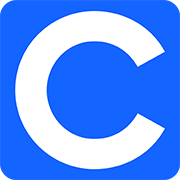
Technology integration is the use of technology resources -- computers, mobile devices like smartphones and tablets, digital cameras, social media platforms and networks, software applications, the Internet, etc. in daily classroom practices, and in the management of a school.

21st Century Education:
A fundamental part of the 21st century education system is about believing and achieving “the impossible.” Though making such a shift in the educational system is not easy, it is important to reinvent schools for the future well being of our society. The 21st century classroom is flexible, creative, challenging, and complex. We have been and we currently are under a technological revolution and our schools must keep up because we currently live in an increasingly diverse, complex culture.
21st Century Skills:
Students’ are taught skills throughout a project-based curriculum by utilizing seven skills: Curiosity and Imagination Accessing information Effective oral and written communication’ Initiative Adaptability Collaboration across networks Critical thinking and Problem Solving The goal is to create students who are globalized citizens.

Becoming a Technology-Using:
Role as teachers must change from the factory-model education of the past. No more textbook lectures, no more teacher-centered paper and pencil schooling. A new way of designing and delivering lessons is mandatory. Schools will go from buildings to centers where the walls are transparent and teachers are connected as the students are with the community around them. The teachers primary role is to show the path to success and assist in learning and helping students turn information into knowledge.

- Full access to our public library
- Save favorite books
- Interact with authors

Technology integration is the use of technology resources -- computers, mobile devices like smartphones and tablets, digital cameras, social media platforms and networks, software applications, the Internet, etc. in daily classroom practices, and in the management of a school.

21st Century Education:
A fundamental part of the 21st century education system is about believing and achieving “the impossible.” Though making such a shift in the educational system is not easy, it is important to reinvent schools for the future well being of our society. The 21st century classroom is flexible, creative, challenging, and complex. We have been and we currently are under a technological revolution and our schools must keep up because we currently live in an increasingly diverse, complex culture.
21st Century Skills:
Students’ are taught skills throughout a project-based curriculum by utilizing seven skills: Curiosity and Imagination Accessing information Effective oral and written communication’ Initiative Adaptability Collaboration across networks Critical thinking and Problem Solving The goal is to create students who are globalized citizens.

Becoming a Technology-Using:
Role as teachers must change from the factory-model education of the past. No more textbook lectures, no more teacher-centered paper and pencil schooling. A new way of designing and delivering lessons is mandatory. Schools will go from buildings to centers where the walls are transparent and teachers are connected as the students are with the community around them. The teachers primary role is to show the path to success and assist in learning and helping students turn information into knowledge.
- < BEGINNING
- END >
-
DOWNLOAD
-
LIKE(1)
-
COMMENT()
-
SHARE
-
SAVE
-
BUY THIS BOOK
(from $2.99+) -
BUY THIS BOOK
(from $2.99+) - DOWNLOAD
- LIKE (1)
- COMMENT ()
- SHARE
- SAVE
- Report
-
BUY
-
LIKE(1)
-
COMMENT()
-
SHARE
- Excessive Violence
- Harassment
- Offensive Pictures
- Spelling & Grammar Errors
- Unfinished
- Other Problem






COMMENTS
Click 'X' to report any negative comments. Thanks!